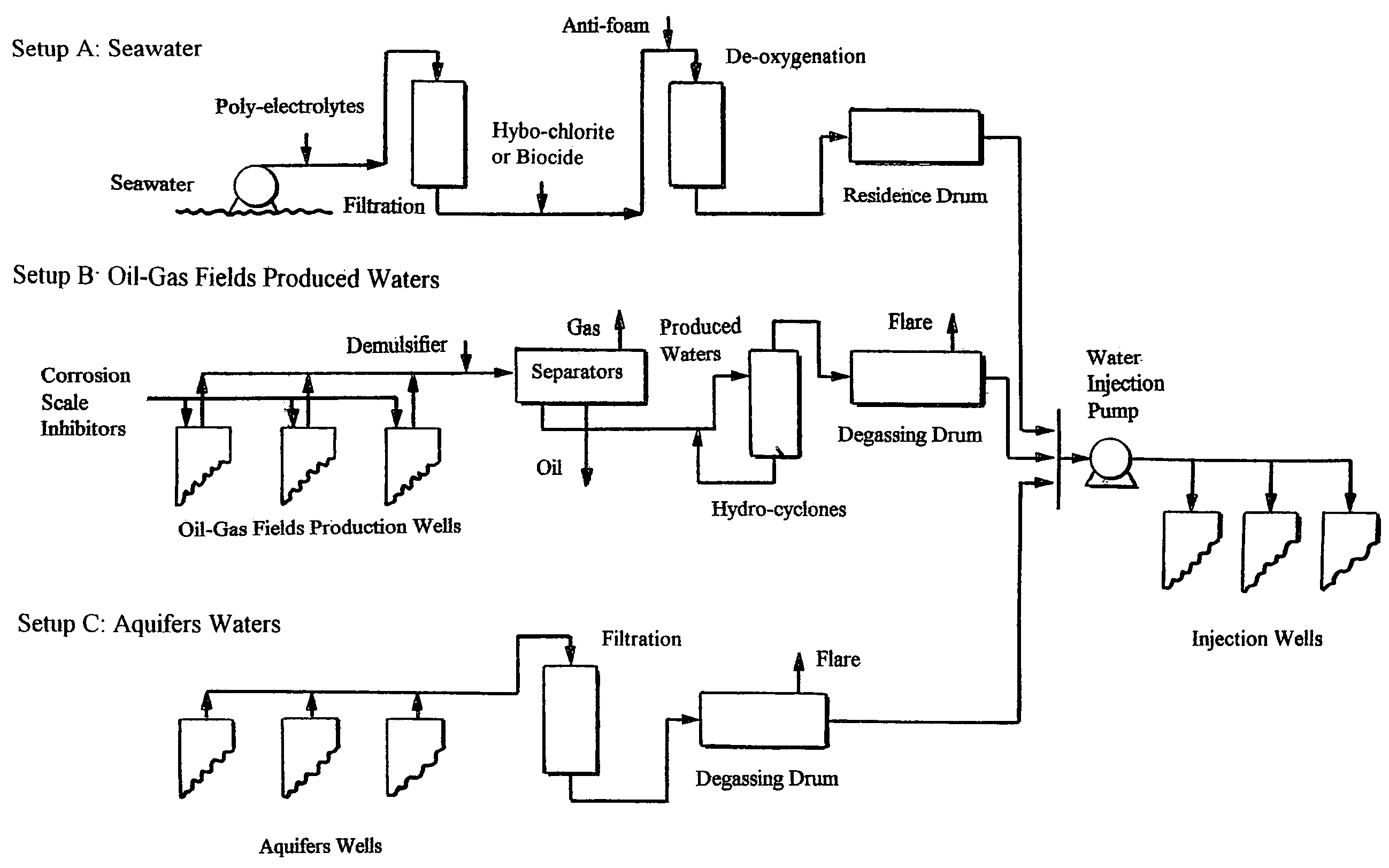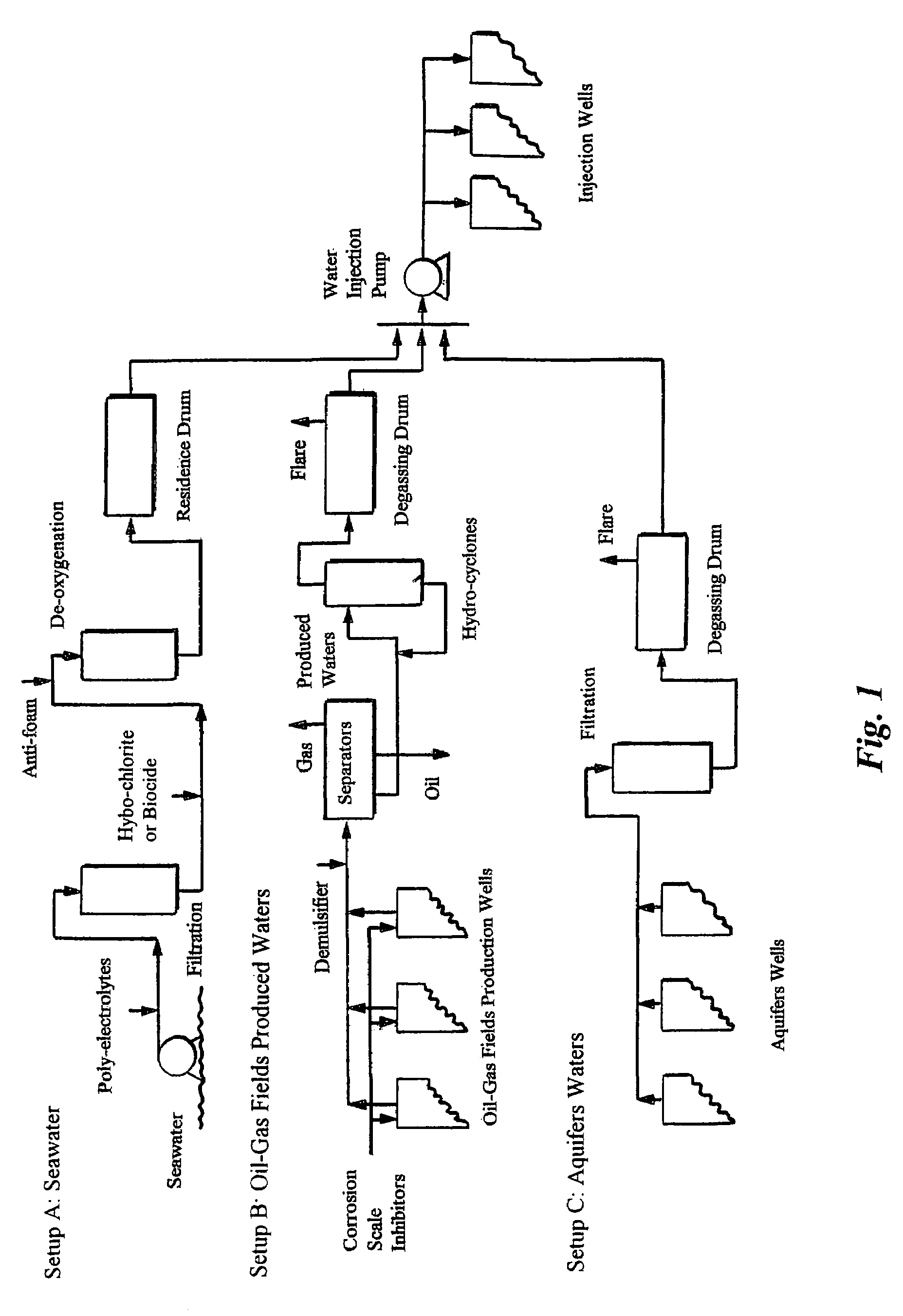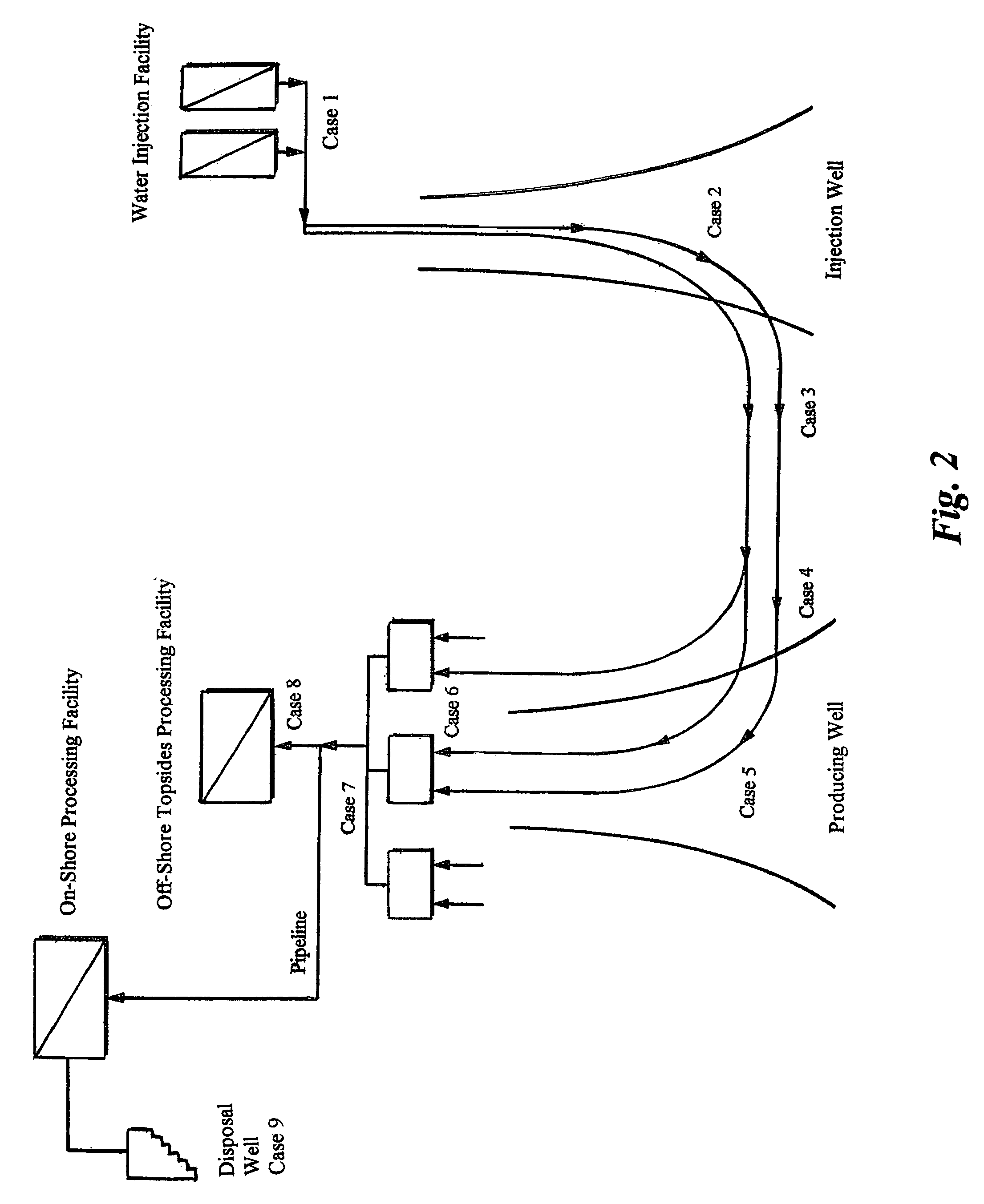Methods to solve alkaline-sulfate scales and related-gases problems
- Summary
- Abstract
- Description
- Claims
- Application Information
AI Technical Summary
Benefits of technology
Problems solved by technology
Method used
Image
Examples
example 1
[0074]Depending on the source of seawater (e.g., Gulf of Mexico, North Sea, Arabian Gulf, etc.), the sulfate concentration varies between 2,700 to 3,600 ppm. Although there is a considerable difference in sulfate concentration of seawater from different sources, the relative abundance of the major constituents of seawater (e.g., sulfate to chloride ratio) is about the same everywhere. The variation in the sulfate concentration may be insignificant in choosing the method for treating seawater (e.g., the aqueous solubility limit of calcium sulfate is a function of salinity and temperature). However, higher sulfate concentrations in seawater (e.g., Arabian Gulf) leads to magnify the amount sulfate scale deposits in the forms sparingly soluble alkaline cations in the reservoirs if seawater is injected without selective removal of sulfate.
[0075]Nanofiltration (NF) membranes are capable of highly rejecting divalent ions (e.g., sulfate ion) while retaining a large portion of monova...
example 2
Oil-Gas Fields Produced Waters
[0098]Often produced waters are mixed together from different production zones. The chemistry of such waters differs considerably from zone to zone within the same production facilities. The mixing of incompatible waters causes almost immediate scales build-up. FIG. 1 (setup B) reveals a typical design of many existing topsides facilities that separate produced hydrocarbons (oil and gas) from produced waters.
[0099]In a typical topside facility, produced fluids (hydrocarbons and water) from different blocks of production wells are mixed together at the start of the fluid treatment facilities on the platform. The mixed stream enters two-phase high-pressure (e.g., 900 psi) and intermediate-pressure separators to remove gas from the stream. Oil and produced water are passed from the separators to typically an electrical coalescer where the produced water is removed from the crude oil by electrostatic precipitation. The oily produced water can then be treate...
example 3
Aquifers Waters
[0105]As an example, the treatment and injection of the Paradox Valley brine waters are used to illustrate the treatment of aquifers waters for oil-gas fields water injection operations.
[0106]The natural seepage of brine waters into the Dolores River in the Paradox Valley (Colo.) has led to annually increase the dissolved solids of the Colorado River by about 200 million kilograms. The Colorado River is a major source of potable water for both the United States and the Republic of Mexico. To solve this problem, about 3,540 cubic meters per day of brine waters need to be pumped from shallow brine wells located along the Dolores River into a very deep disposal well (Mississippian Leadville Limestone).
[0107]This volume of continuous pumping is essential to create a cone of depression in the brine fields near the Colorado River. The created cone of depression should presumably be filled with river water, and consequently stop the seepage of brine waters into the river. Ho...
PUM
 Login to View More
Login to View More Abstract
Description
Claims
Application Information
 Login to View More
Login to View More - R&D
- Intellectual Property
- Life Sciences
- Materials
- Tech Scout
- Unparalleled Data Quality
- Higher Quality Content
- 60% Fewer Hallucinations
Browse by: Latest US Patents, China's latest patents, Technical Efficacy Thesaurus, Application Domain, Technology Topic, Popular Technical Reports.
© 2025 PatSnap. All rights reserved.Legal|Privacy policy|Modern Slavery Act Transparency Statement|Sitemap|About US| Contact US: help@patsnap.com



